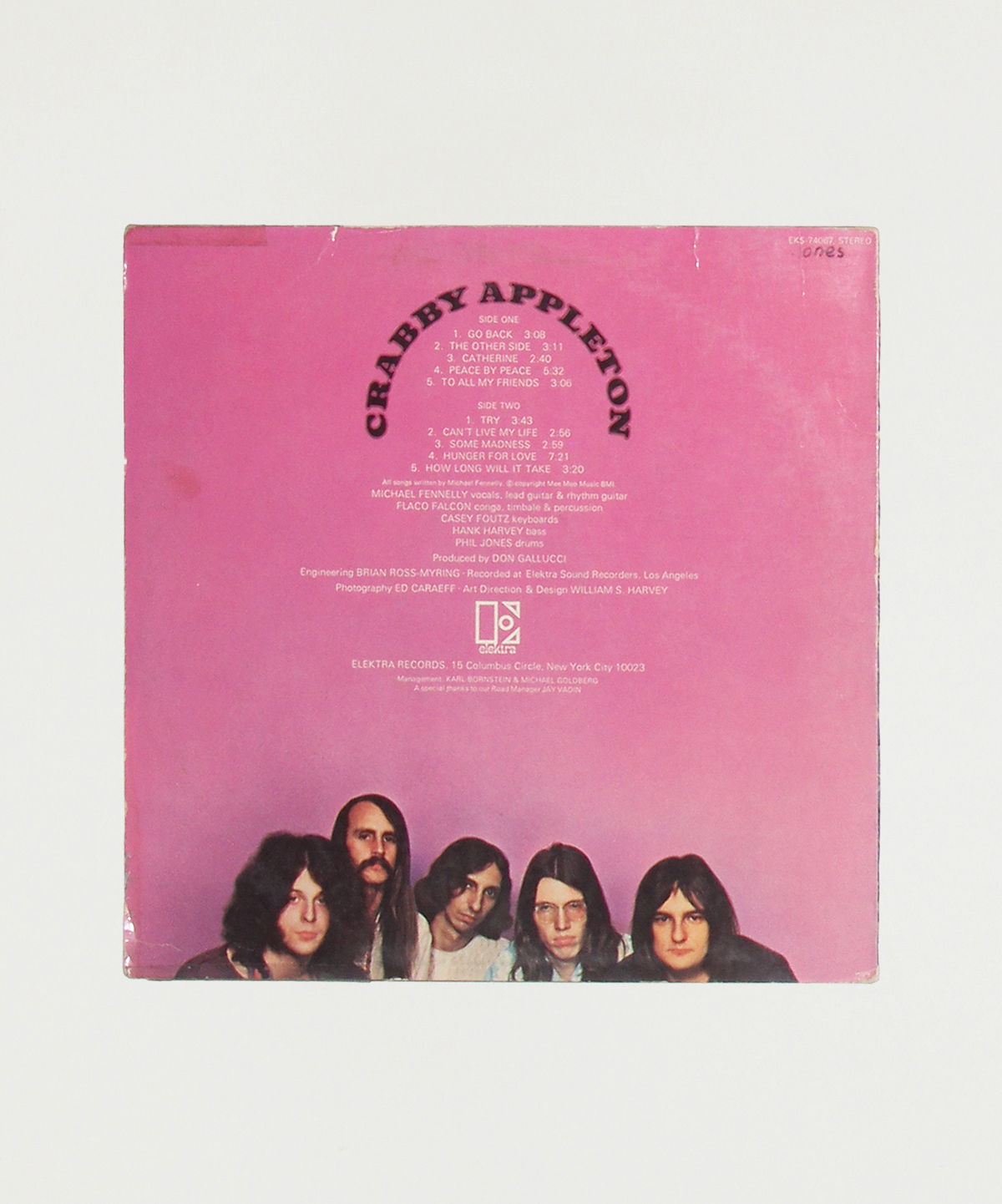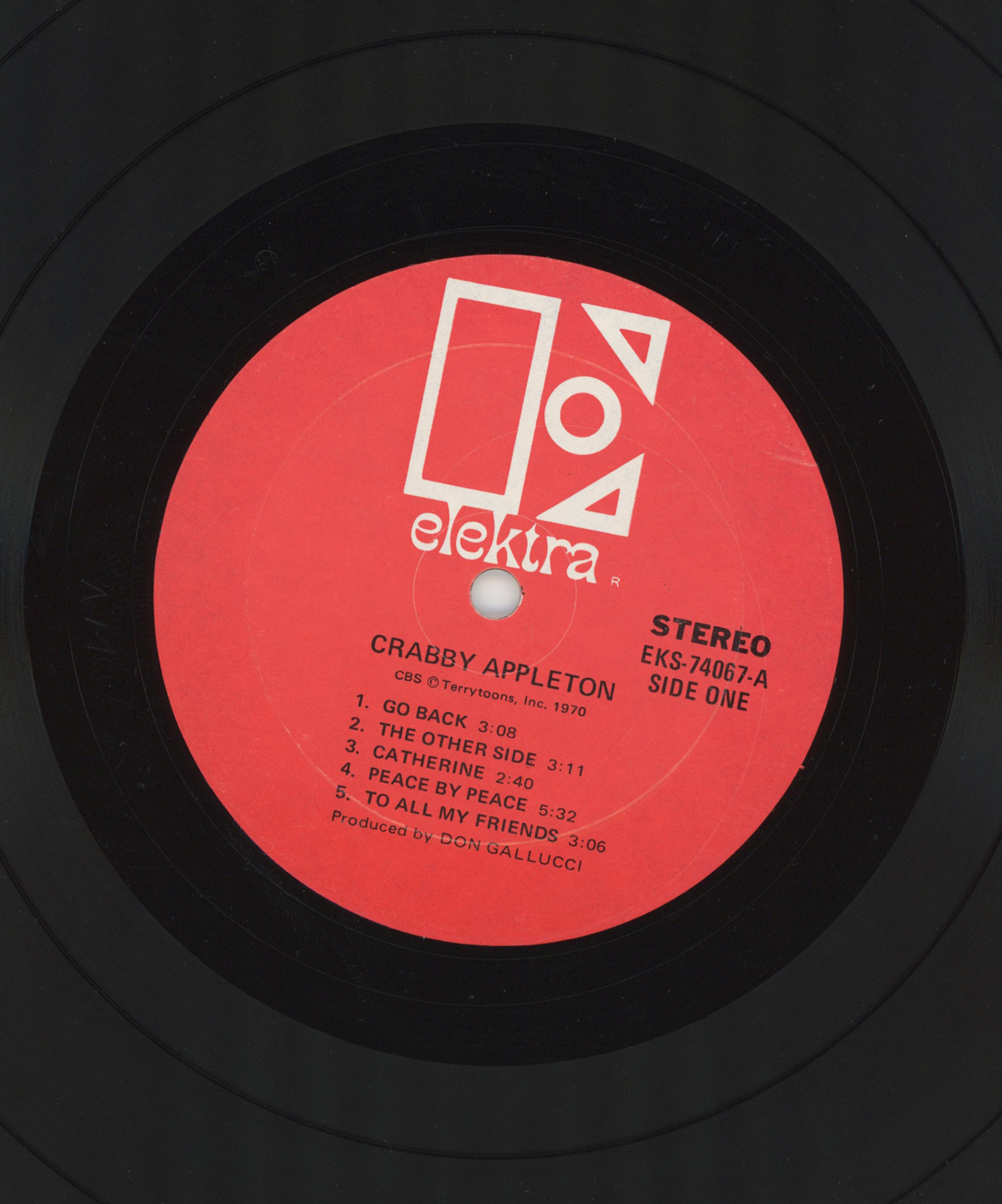Media Condition: VG+
Sleeve Condition: VG
Genre: Rock, Power Pop, Psychedelic
Notes: Solid VG+ condition, plays clean. Cover has top-right corner cutout, minor edgewear, a corner crease, and subtle ringwear/shelfwear.
If you like: early ‘70s Latin-tinged soft rock like that of Blues Image or the sounds of early Brewer & Shipley and Poco, you’ll enjoy Crabby Appleton’s eponymous debut.
About: After departing from Curt Boettcher’s various studio-based groups–The Millennium, Sagittarius, et al.–guitarist/vocalist Michael Fennelly struck out on his own. In 1969, Fennelly went to Thee Experience, a Sunset Strip club, where he met the members of Stonehenge, a blues-oriented group whose lineup included Casey Foutz (keyboards), Hank Harvey (bass), Felix “Flaco” Falcon (percussion), Phil Jones (drums), and an unknown guitarist/lead vocalist. Stonehenge were, at the time, being scouted by a friend of their manager’s, Elektra A&R man David Anderle, who had told the band that–in order to get a record deal–they would probably have to replace their lead singer, as he didn’t write songs and clearly wasn’t up to par with the rest of the band. Members of Stonehenge and Fennelly hit it off and, as Fennelly’s “To Claudia on Thursday,” a Millennium single, was getting airplay in L.A. at the time, the band thought he might be the perfect collaborator. They took the idea to Elektra, who agreed, and they formally invited Fennelly to join the band. They soon changed their name to Crabby Appleton (the name of a villain in a cartoon which aired during the Captain Kangaroo Show in the ‘50s and ‘60s) and began recording their first album. The eponymous Crabby Appleton, produced by Elektra house producer Don Gallucci (from Don & the Good Times and Touch), was released in 1970. The band enjoyed some success with a hooky single, “Go Back,” which peaked at number 36 in June 1970 after five weeks on the charts. Over the next two years, subsequent singles by the band failed to catch fire. The group’s second album, Rotten to the Core, found the band stretching out in different directions, but it failed to connect with its intended audience, and the band decided to break up. In 1973, Fennelly moved to England and began to focus on a solo career. He released two solo albums–1974’s Lane Changer, produced by ex-Zombies bassist Chris White (the album also featured another Zombie, Rod Argent, on synthesizer), and 1975’s Stranger’s Bed, produced by Denny Bruce–though he never achieved the kind of success that everyone expected.*via Bryan Thomas
A favorite track: How Long Will It Take





